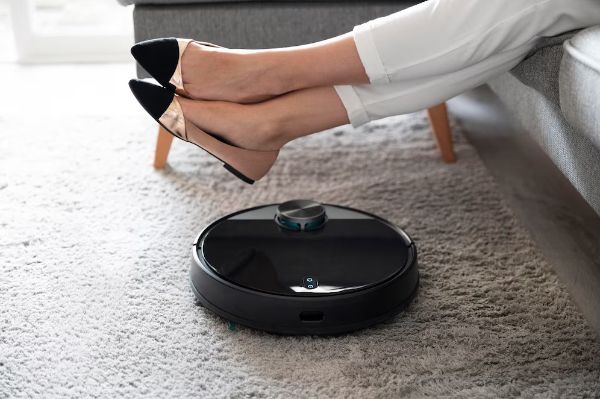Robot vacuums have become increasingly popular in recent years as convenient cleaning tools for households. These automated devices are designed to navigate and clean various floor surfaces, including carpets. But are robot vacuums actually good at cleaning carpets?

Let’s take a closer look at their effectiveness on carpets and what factors to consider when using them.
- Carpet Types: Robot vacuums can generally handle most common carpet types, including low-pile carpets, medium-pile carpets, and some high-pile carpets. However, it’s important to note that certain robot vacuum models may struggle with very high-pile or shaggy carpets due to their limited maneuverability and suction power.
- Suction Power: The suction power of a robot vacuum plays a significant role in its effectiveness on carpets. A robot vacuum with strong suction power can effectively lift and remove dirt, dust, and debris from carpets. It’s advisable to look for robot vacuum models with a higher suction rating or those specifically designed for deep cleaning carpets.
- Brush Roll Design: Many robot vacuums come with brush rolls that agitate the carpet fibers to dislodge dirt and debris. Brush rolls with robust bristles are particularly effective at reaching deep into the carpet fibers and extracting embedded dirt. Look for robot vacuums with brush rolls designed to handle carpets and consider models with adjustable brush height settings to accommodate different carpet thicknesses.
- Navigation and Maneuverability: Robot vacuums employ various navigation technologies, such as sensors and cameras, to map and navigate your home. When it comes to carpets, some models may struggle with transitioning from hard floors to carpets or getting stuck on thicker carpets. However, many advanced robot vacuums have improved sensors and algorithms that allow them to handle carpets more effectively.
- Maintenance: Carpets tend to trap more dirt and debris compared to hard floors, which means the dustbin of a robot vacuum can fill up faster when cleaning carpets. Consider the size of the dustbin and how frequently you’ll need to empty it when choosing a robot vacuum. Additionally, regular maintenance, such as cleaning or replacing the brush roll and filters, is essential for optimal performance on carpets.
While robot vacuums can be effective on carpets, it’s important to set realistic expectations. Robot vacuums generally excel at surface cleaning and routine maintenance rather than deep-cleaning carpets. For heavily soiled carpets or stains, manual spot cleaning or professional carpet cleaning may be necessary.
It’s also worth noting that certain factors can impact a robot vacuum’s performance on carpets. For example, if your carpets have loose threads or fringes, it’s possible for the robot vacuum to get entangled or cause damage. Additionally, very thick or uneven carpets may pose challenges for some robot vacuum models.
In conclusion, robot vacuums can be a convenient and effective cleaning solution for carpets, particularly for routine maintenance and surface cleaning. Look for models with strong suction power, appropriate brush roll design, and advanced navigation capabilities.
Consider your carpet type, carpet thickness, and maintenance requirements to ensure the robot vacuum you choose is suitable for your carpeted areas. While they may not replace deep cleaning methods entirely, robot vacuums can certainly assist in keeping your carpets looking tidy and fresh with minimal effort on your part.
